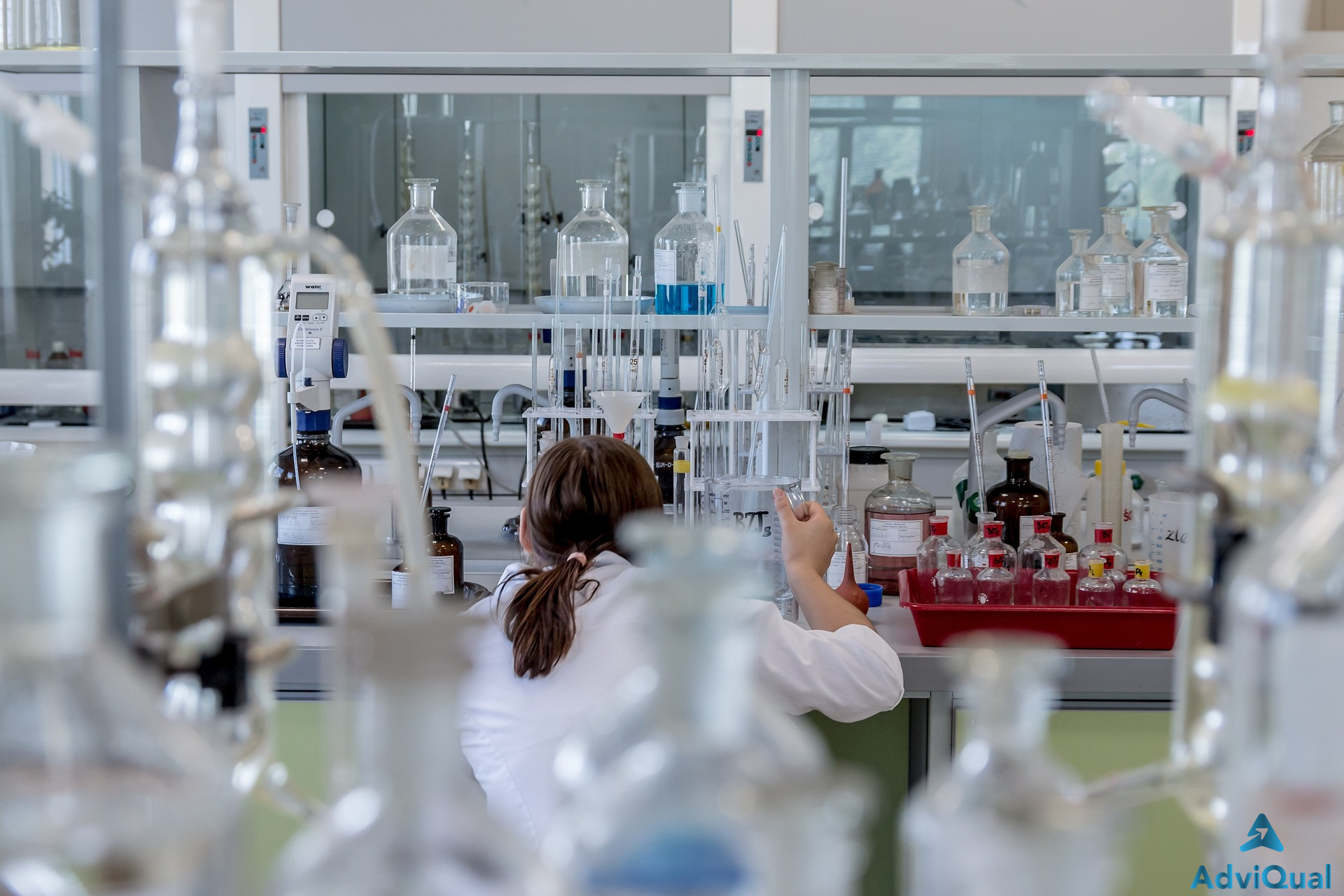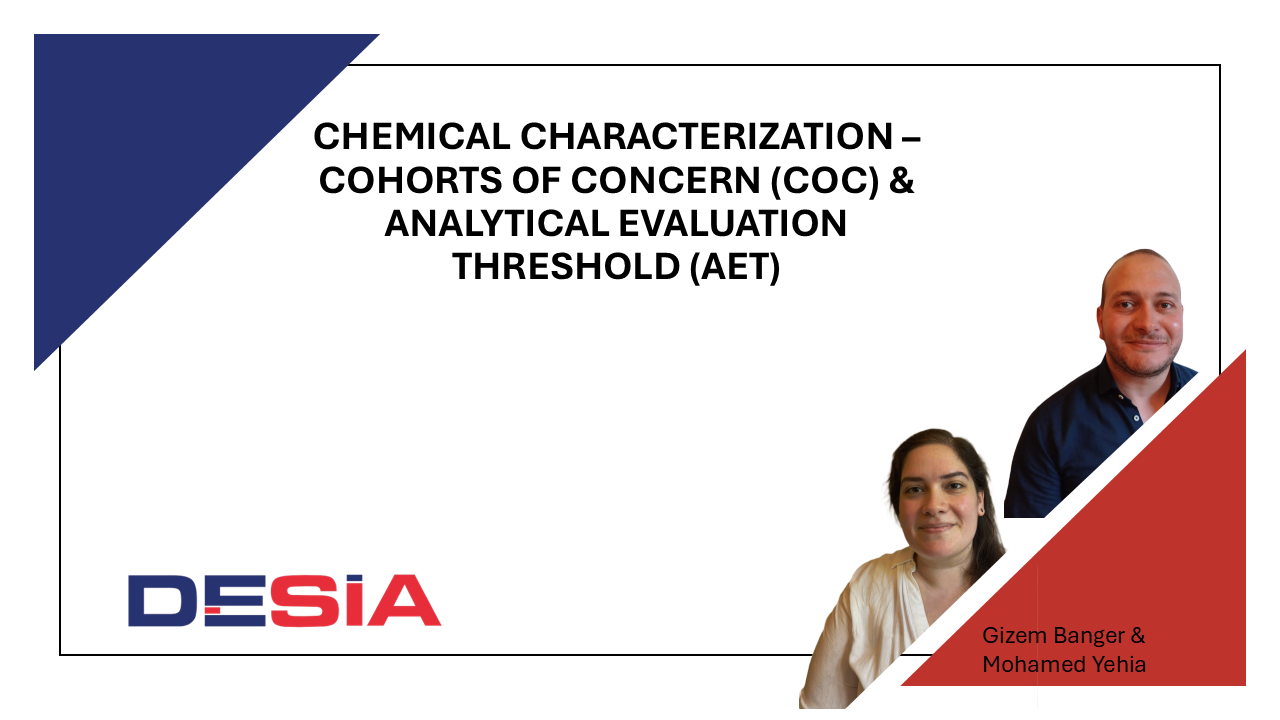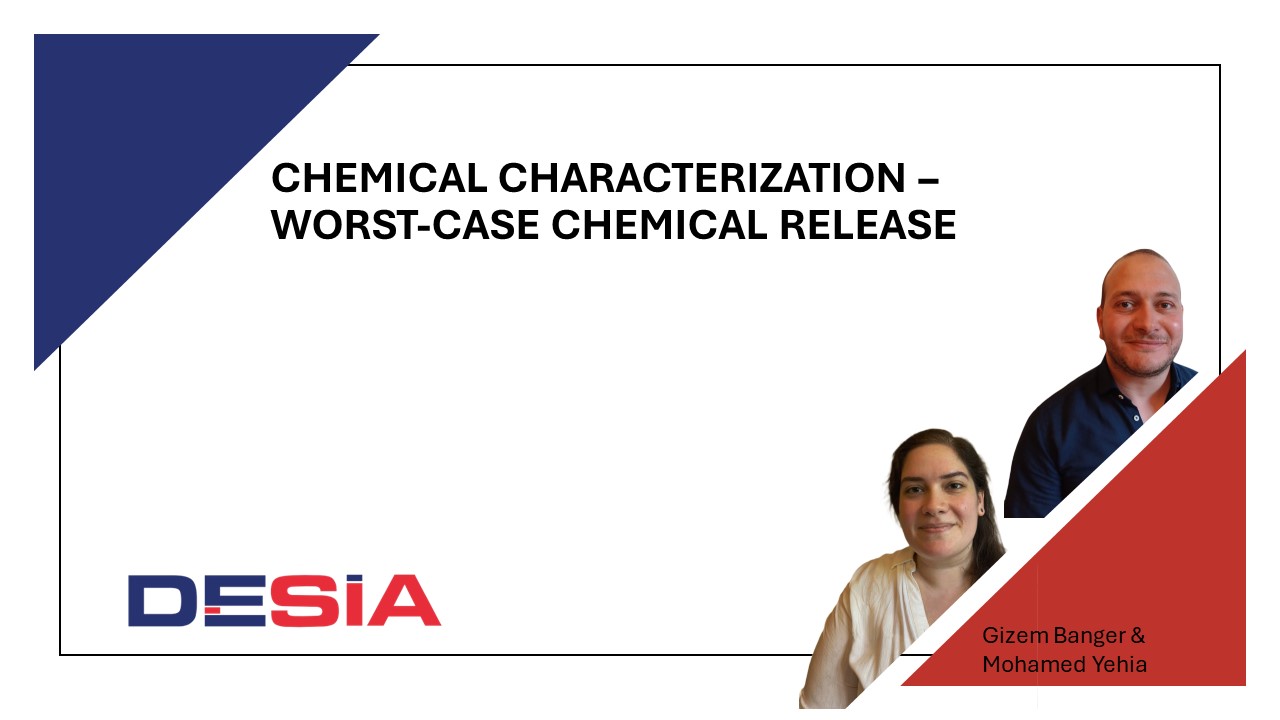Chemical characterization - Overview
Each medical device has to display biocompatibility, which based on what stated in the EN ISO 10993-1:2020, Biological evaluation of medical devices — Part 1: “Evaluation and testing within a risk management process” is defined as the “ability of a medical device or material to perform with an appropriate host response in a specific application”. In another terms, it is required to prove the safety of the medical device for the targeted population, intended users, and anyone is in direct or indirect contact with the medical device during the whole clinical use period of the device under evaluation. Biocompatibility can be assessed based on the chemical, physico-chemical, morphological, topographical, and biological characterization of the medical device.
- What is Chemical characterization?
According to what stated in the EN ISO 10993-18:2020, Biological evaluation of medical devices — Part 18: “Chemical characterization of materials” chemical characterization is defined as “process of obtaining chemical information, accomplished either by information gathering or by information generation, for example, by literature review or chemical testing”. The aim of the chemical characterization is to detect a framework for the identification, quantification of medical device constituents. In addition, it aims to allowing the specification of biological hazards and the approximation and management of biological risks from material constituents, via applying a generally stepwise proposition to the chemical characterization which can involve one or more of the following:
- Medical device configuration through the identification of its materials of construction;
- Identification of the material composition via the characterization of the materials of construction and their chemical constituents;
- Specification of the chemical substances that were introduced during manufacturing;
- Identification of the extractables via implementation of the laboratory extraction conditions to check for the potential of the medical device to release chemical substances under clinical use conditions;
- Identification of the leachables through the measurement of chemical substances released from a medical device under its clinical conditions of use.
- How chemical characterization can be achieved?
For the conduction of chemical characterization, a certain procedure shall be followed. Below is the brief description for the chemical characterization procedure. Each step will be explained with further details:
 Gather qualitative and quantitative material compositional information.
Gather qualitative and quantitative material compositional information.- Check whether there is a clinically established device with the same configuration, composition and clinical use, or not. If the answer is “yes”, then it will be the end of the chemical characterization and in this case, chemical information supports equivalence and a toxicological risk assessment conclusion (as per ISO 10993-17) that constituents extractables, or leachables present an acceptable health risk. This outcome can be used to support biological evaluation under ISO 10993-1 (Section 5.10). However, if the answer is “no”, which is the most common, then move to step 3.
- Assess the hypothetical worst-case chemical release based on total exposure to the medical device's chemical constituents via compositional profiling including chemical substances that were introduced during manufacturing and assess whether the risk assessment of the compositional information conclude device has acceptable risk and within the safety limit threshold or not. If the answer is “yes”, then it will be the end of the chemical characterization as stated in step 1. However, if the answer is “no”, then move to step 4.
- Check the presence of cohorts of concern (CoC). Cohorts of Concern “CoC” is defined as the set of compounds that demonstrate potential cause of safety risk issues to patients despite being below the Threshold of Toxicological Concern (TTC), which is the level above which the intake of certain compound can cause toxicity.
- Calculate Analytical Evaluation Threshold “AET”. Analytical Evaluation Threshold “AET” is defined as the threshold below which there is no need to identify or quantify materials extracted from the medical device and in accordance, there is no need to report them for potential toxicological assessment.
- Perform extractables profile following the recommended extraction conditions and vehicles via applying the following methods” GC/MS, HS-GC/MS, HPLC/MS or UPLC/MS, ICP-MS or ICP-AES, and IC” or any other relevant method to check for the proper compound or element and check if the risk assessment of the extractables data conclude device has acceptable risk or not. If the answer is “yes”, then it will be the end of the chemical characterization as stated in step 1. However, if the answer is “no”, then move to step 7.
- Perform leachable profile and check if the risk assessment of the leachables data conclude device has acceptable risk or not. If the answer is “yes”, then it will be the end of the chemical characterization as stated in step 1. However, if the answer is “no”, then this means that chemical information does not support equivalence or a toxicological risk assessment conclusion (as per ISO 10993-17) that constituents extractables, or leachables present an acceptable health risk. Hence, the need for further assessment as biological tests or any other mitigation activities should be evaluated per ISO 10993-1 and ISO 10993-17.
LIST OF ACRONYMS & ABBREVIATIONS
|
AES |
Atomic Emission Spectroscopy |
|
AL |
Allowable Limit |
|
ATR |
Attenuated Total Reflectance |
|
BF |
Benefit Factor |
|
CEF |
Concomitant Exposure Factor |
|
CoC |
Cohorts Of Concern |
|
E&L |
Extractables And Leachables |
|
FTIR |
Fourier Transform Infrared |
|
GC |
Gas Chromatography |
|
HPLC |
High Performance Liquid Chromatography |
|
HS |
Head Space |
|
IC |
Ion Chromatography |
|
ICP |
Inductively Coupled Plasma |
|
LOAEL |
Lowest Observed Adverse Effect Level |
|
MF |
Modifying Factor |
|
MFTCL |
TCL Modifying Factor |
|
MIL |
Minimally Irritating Level |
|
MS |
Mass Spectrometry |
|
NIL |
Non-Irritating Level |
|
NOAEL |
No Observed Adverse Effect Level |
|
PEF |
Proportional Exposure Factor |
|
TCL |
Tolerable Contact Level |
|
TE |
Tolerable Exposure |
|
TI |
Tolerable Intake |
|
TTC |
Threshold of Toxicological Concern |
|
UF |
Uncertainty Factor |
|
UPLC |
Ultra-Performance Liquid Chromatography |
|
UTF |
Utilization Factor |




